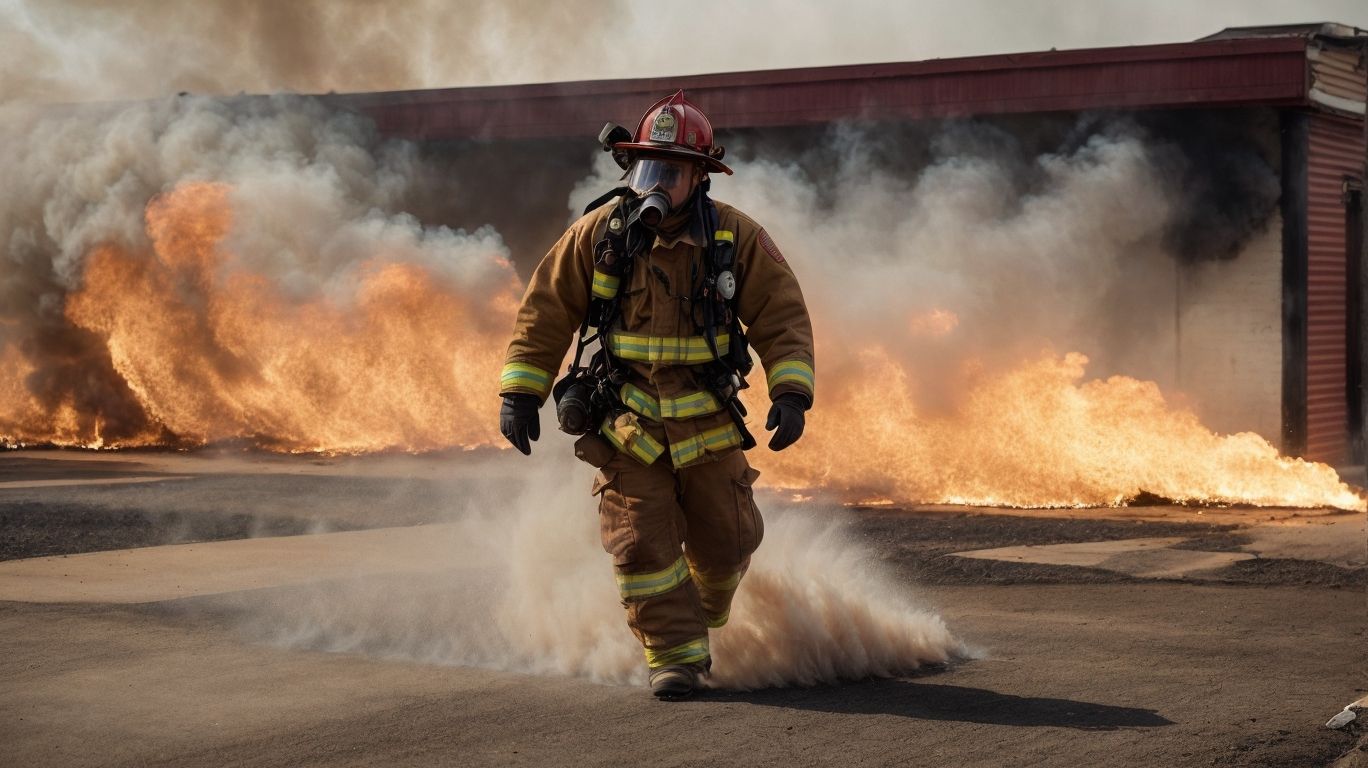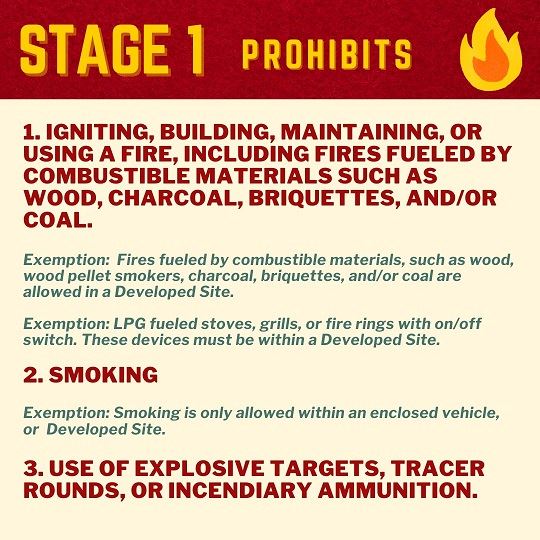County firefighters are the unsung heroes of our communities, bravely facing challenging and dangerous situations to ensure the safety and well-being of the public.
In this article, we will delve into the crucial role of county firefighters, exploring their duties, qualifications, daily tasks, and the challenges they face. We’ll also shine a light on the physical and mental demands of the job, as well as the rigorous training and preparation these dedicated professionals undergo to handle emergencies effectively.
By gaining insight into the world of county firefighters, we can truly appreciate their vital contribution to our communities and the invaluable service they provide. Join us as we explore the world of these fearless individuals and gain a deeper understanding of their essential role in keeping our neighborhoods safe.
What is the Role of a County Firefighter?
County firefighters play a pivotal role in ensuring public safety by providing emergency response and fire rescue services in communities. They are unsung heroes who demonstrate courageous and selfless acts in their commitment to protecting lives and property.
County firefighters actively engage in fire prevention through community education, safety inspections, and enforcement of fire codes, aiming to reduce the risk of fires. Their expertise in handling hazardous materials is indispensable in mitigating potential disasters and protecting the environment. These professionals are at the forefront of disaster response, providing essential support during natural calamities, accidents, and other emergencies.
Their unwavering dedication and extensive training make them an indispensable asset in safeguarding public safety.
What Are the Duties of a County Firefighter?
The duties of a county firefighter encompass a wide range of responsibilities, including fire prevention, continuous fire training, execution of rescue missions, and the implementation of critical incident stress management protocols.
Fire prevention plays a crucial role in the firefighter’s duties, involving education and outreach programs to raise community awareness about fire safety measures. Continuous fire training enables them to stay abreast of the latest firefighting techniques and equipment, ensuring effective response to various emergencies.
In addition to firefighting, their involvement in rescue missions showcases their versatility, from water rescues to vehicle extractions, emphasizing their contribution to public safety beyond traditional firefighting duties. Adhering to critical incident stress management practices is integral to ensuring their mental well-being amidst the demanding nature of their job.
What Are the Qualifications to Become a County Firefighter?
Becoming a county firefighter requires meeting specific qualifications, including obtaining fire safety education, compliance with fire safety standards, certification as a first responder or paramedic, and undergoing rigorous fire safety training.
Fire safety education is essential for prospective county firefighters, as it equips them with the necessary knowledge to prevent and respond to fire emergencies effectively. Understanding fire safety standards and demonstrating compliance is also crucial in ensuring the safety of both the public and fellow firefighters.
Obtaining certification as a first responder or paramedic enables firefighters to provide immediate medical assistance in emergency situations, further enhancing their capabilities. Rigorous fire safety training hones their skills and prepares them to tackle diverse firefighting challenges, making it an indispensable part of their career preparation.
What Training Do County Firefighters Undergo?
County firefighters undergo comprehensive training programs that encompass fire safety protocols, guidelines, and best practices to equip them with the necessary skills and knowledge for effective emergency response and fire suppression.
These programs involve extensive immersion in fire safety protocols, with firefighters being trained to effectively navigate and execute critical steps in emergency situations. Adherence to guidelines and standards is emphasized, ensuring that every firefighter is well-versed in the latest fire safety protocols and procedures.
This thorough training results in the implementation of best practices when responding to fires, ultimately contributing to the safety of the community and the effectiveness of firefighting efforts.
What Certifications Do County Firefighters Need?
County firefighters are required to obtain certifications that demonstrate their compliance with fire safety regulations, adherence to fire safety procedures, and heightened awareness of fire safety best practices in emergency situations.
These essential certifications encompass a wide range of expertise, including but not limited to incident command, hazardous materials handling, CPR and first aid, and wildland firefighting. Rescue operations, technical rescue, and vehicle extrication are integral components of their training to ensure readiness for various emergency scenarios.
Certifications in fire prevention, public education, and fire investigation are also instrumental in equipping firefighters with the knowledge and skills necessary to protect lives and property.
What is a Typical Day Like for a County Firefighter?
A typical day for a county firefighter involves engaging in fire drills, responding to fire emergencies, implementing fire safety measures, providing first responder services, and collaborating with emergency medical services to ensure prompt and effective lifesaving interventions.
During their shifts, county firefighters diligently practice fire drills to hone their skills and familiarize themselves with various emergency scenarios. When called into action, they swiftly respond to fire emergencies, utilizing their extensive training and specialized equipment to contain and extinguish blazes effectively.
In addition to their hands-on response, these dedicated individuals proactively implement fire safety measures within the community. Whether through educational outreach programs or inspecting public buildings, they strive to minimize fire risks and promote a culture of safety.
County firefighters serve as crucial first responders, offering immediate medical assistance and support to individuals in distress. Their ability to assess and stabilize patients in critical situations significantly contributes to the chain of survival.
Seamless coordination with emergency medical services ensures a swift and cohesive approach to lifesaving interventions. By working in tandem with paramedics and EMTs, firefighters enhance the overall effectiveness of emergency response and maximize positive outcomes for those in need.
What Are the Shift Schedules for County Firefighters?
County firefighters adhere to demanding shift schedules that ensure continuous fire protection and fire code enforcement to safeguard communities around the clock, reflecting their unwavering commitment to public safety.
These shift schedules are meticulously designed to maintain a persistent presence of firefighters who are ready to respond to emergencies at any hour of the day. The structured rotation of shifts allows for consistent monitoring of potential fire hazards, quick intervention in crisis situations, and continuous enforcement of fire codes to enhance overall public safety.
The implementation of shift schedules is vital for providing uninterrupted coverage, particularly in high-risk areas where the threat of fire outbreaks is ever-present. By adhering to these schedules, county firefighters ensure that local communities receive the crucial protection and support they need, reinforcing the crucial role played by firefighters in upholding public safety.
What Are the Daily Tasks of a County Firefighter?
The daily tasks of a county firefighter encompass conducting fire risk assessments, performing fire safety inspections, engaging in fire investigations, and delivering fire safety education to enhance community awareness and preparedness.
Fire risk assessments involve evaluating potential fire hazards and identifying measures to mitigate these risks in residential and commercial areas. During fire safety inspections, firefighters inspect buildings, ensuring compliance with fire codes and regulations to prevent fire incidents.
Engagement in fire investigations requires meticulous examination of fire scenes to determine the cause and origin of fires, contributing to the prevention of future incidents.
Delivering fire safety education involves organizing community outreach programs, conducting workshops, and distributing informational materials to educate the public about fire prevention and safety measures.
What are the Challenges Faced by County Firefighters?
County firefighters encounter various challenges, including responding to fire incidents, mitigating fire damage, conducting fire risk assessments, handling hazardous materials, and implementing effective fire safety measures to ensure community well-being.
They often face intense situations where quick decision-making is critical. Firefighters must navigate through burning structures, brave unpredictable weather conditions, and manage the physical and mental toll of their duties. In addition, they also deal with the complexities of assessing potential risks in diverse environments and ensuring the proper management of hazardous materials to prevent environmental and human harm.
Adopting and enforcing fire safety measures in public spaces and residential areas demands a holistic approach, encompassing education, inspection, and community engagement.
What Are the Physical Demands of the Job?
The role of a county firefighter imposes significant physical demands, necessitating thorough training in understanding fire behavior, safety protocols, and the execution of emergency response procedures in complex fire and rescue operations.
Firefighters are frequently required to carry heavy equipment, climb ladders, and work in confined spaces, all of which demand physical strength and stamina. They must also be able to handle high-stress situations and perform under extreme conditions, such as high temperatures, smoke, and hazardous materials. The job involves tasks like lifting, dragging, and extinguishing fires, which require physical agility and endurance.
Firefighters must be adept at operating specialized equipment and wearing protective gear, showcasing the need for comprehensive physical training to meet the rigorous demands of the role.
How Do County Firefighters Handle High-Stress Situations?
County firefighters are equipped to handle high-stress situations through specialized fire safety training, disaster response preparedness, critical incident stress management techniques, and heightened awareness of fire safety best practices to ensure effective coping and intervention.
Their training includes simulated scenarios and hands-on experience to develop quick thinking and efficient firefighting skills. They undergo extensive disaster response readiness drills to be well-prepared for any emergency.
These firefighters are trained in stress management approaches to mitigate the impact of high-pressure situations on their well-being, enabling them to provide calm and effective assistance.
Their awareness of fire safety best practices is continuously updated to ensure that they remain informed about the latest techniques and technologies in the field.
How Do County Firefighters Prepare for Emergencies?
County firefighters thoroughly prepare for emergencies by engaging in fire prevention initiatives, undergoing comprehensive fire safety training, honing their skills for rescue missions, and ensuring strict compliance with fire safety regulations and best practices.
Firefighters are actively involved in community education programs to raise awareness about fire prevention measures and best practices. They regularly inspect commercial and residential buildings for potential fire hazards and conduct safety drills to ensure preparedness. They participate in specialized training exercises to enhance their proficiency in search and rescue operations during emergencies.
Adhering to fire safety compliance and regulations, they maintain and regularly inspect their equipment and tools to ensure their readiness for any mission. Their dedication and commitment substantially contribute to the safety and security of the community.
What Equipment and Tools Do County Firefighters Use?
County firefighters rely on essential firefighting equipment and tools, including fire apparatus, fire hoses, fire extinguishers, and fire hydrants, to effectively execute their lifesaving and fire suppression duties in emergency situations.
In addition to these, county firefighters are also equipped with breathing apparatus to enter smoke-filled environments, thermal imaging cameras to locate hotspots, and power tools for swift access in rescue operations. They are trained to use foam systems to extinguish liquid fires, and ladder trucks for high-rise building rescues.
Close coordination with dispatch centers ensures timely deployment of resources, while protective gear and clothing ensure their safety during firefighting operations.
What Training Do County Firefighters Undergo for Emergency Situations?
County firefighters undergo specialized training in fire rescue techniques, fire suppression tactics, hazardous materials management, and fire prevention programs to enhance their preparedness and proficiency in addressing diverse emergency situations.
These training programs encompass a wide range of skills and knowledge, including advanced techniques in handling complex rescue operations, utilizing cutting-edge equipment for fire suppression, effectively managing hazardous substances, and implementing proactive measures to prevent fire outbreaks in the community.
Through their immersion in fire rescue techniques, firefighters learn to navigate through high-stress environments to save lives and mitigate property damage, while honing their skills in fire prevention programs to educate and empower the public in reducing fire risks.






